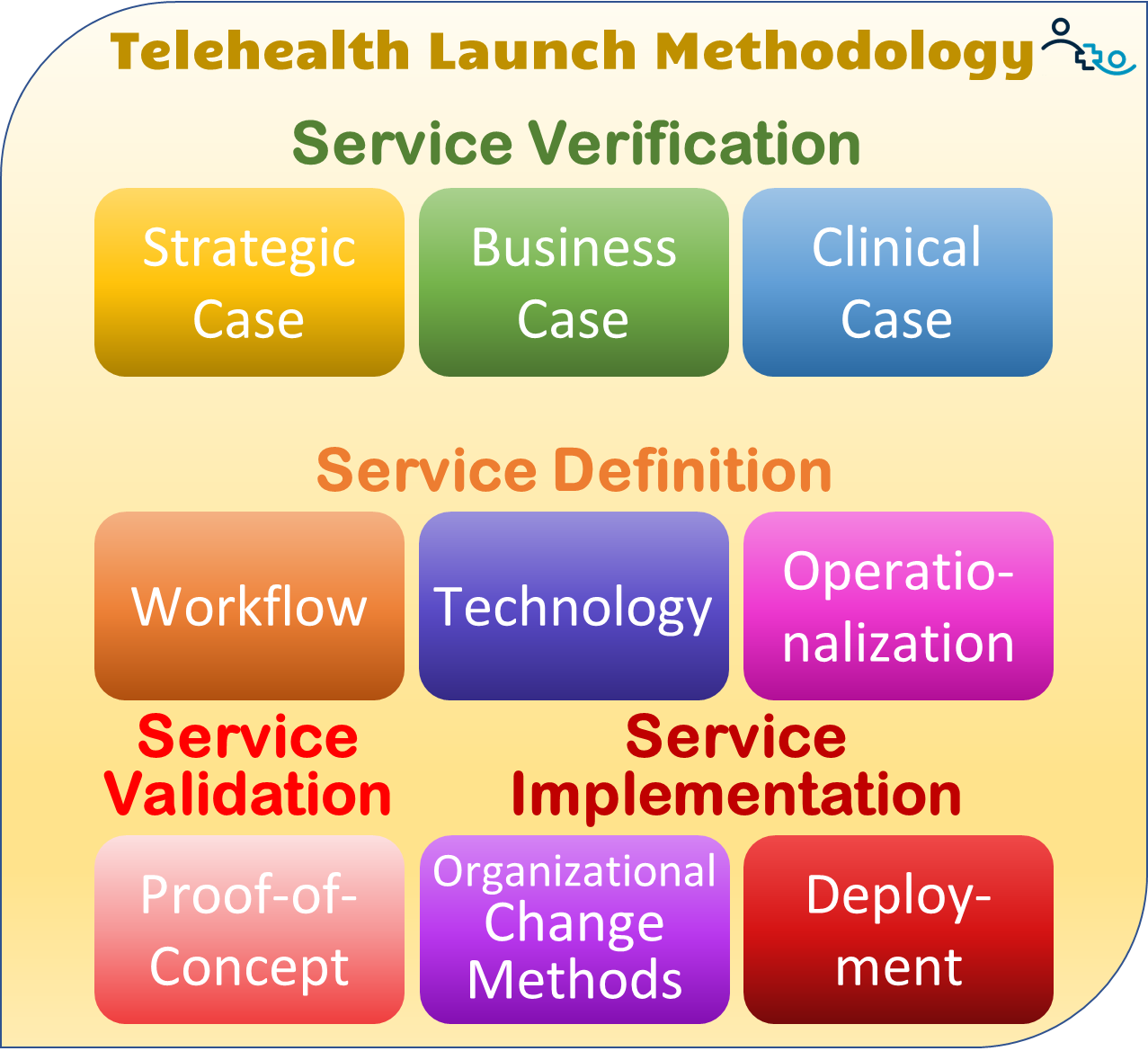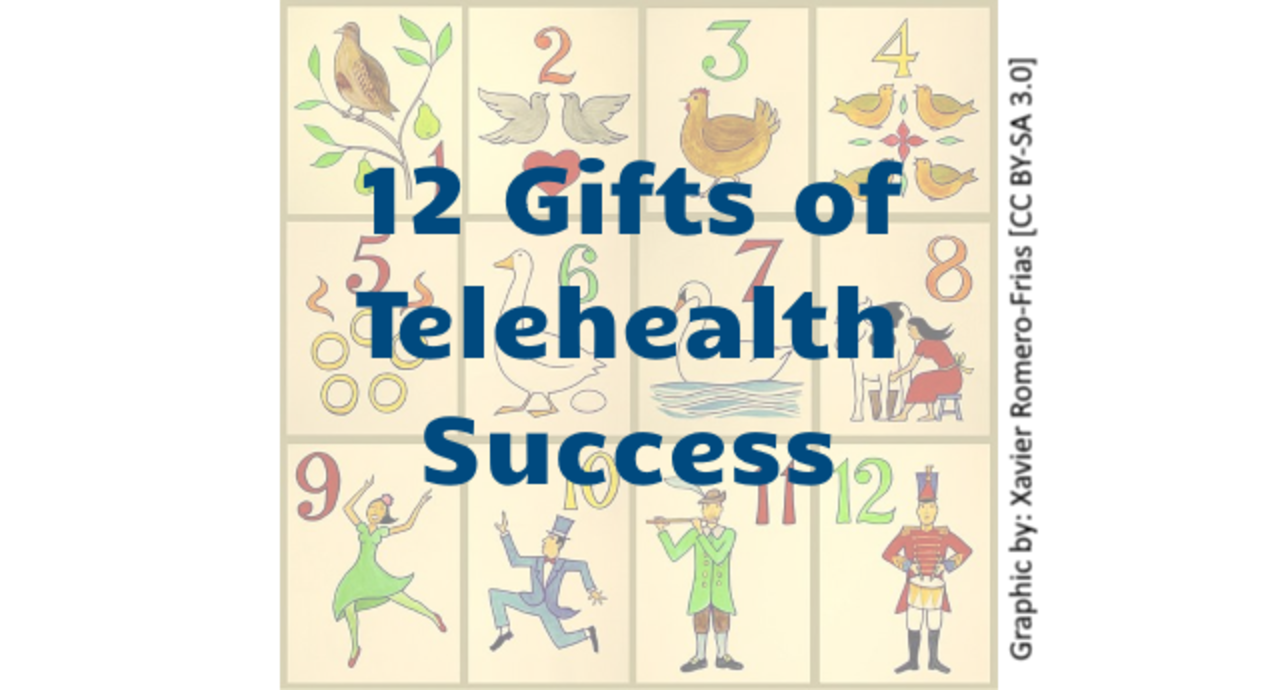For the 12 days of Christmas, my telehealth consultant gave to me…these 12 gifts of insights as to how you can ensure the likelihood of creating, improving, and running a sustainable, valuable telehealth service. Enjoy!
On the first day of Christmas, my consultant gave to me:
One executive from your C-Suite that is accountable for the success of all your telehealth services (and not the CIO). Telehealth is first and foremost the design and rollout of a new clinical service and thereby requires executive leadership’s support to manage the organizational change.
On the second day of Christmas, my consultant gave to me:
Two leaders to lead your telehealth program: a clinician and an administrator. With telehealth being a clinical service, a clinician must be driving and leading the charge for new telehealth services. And just like at the Mayo Clinic and other healthcare organizations leading in dyads, the clinical leader must be paired up with an administrative leader with not only operational experience, but also project management acumen to oversee the launch of new telehealth services.
On the third day of Christmas, my consultant gave to me:
Three people in IT to ensure success, including a network engineer, a workstation administrator, and a help desk lead.
On the 4th day of Christmas, my consultant gave to me:
The four phases of launching telehealth, including Verification, Design, Validation and Deployment (look for more guidance on the ninth day of Christmas).
On the 5th day of Christmas, my consultant gave to me:
🎵“Five golden plans”: A stakeholder management plan, a communication plan, a quality management plan, a risk management plan, and a change management plan.
On the 6th day of Christmas, my consultant gave to me:
Six degrees of separation from your technology vendor. Unless your technology vendor is also your consultant, you want to ensure that your own team or your implementation consultant is leading and driving the implementation. Many technology vendors’ goals is to get “in and out” as quickly as possible, as more time spent reduces their profit margin. Yes, you’ll want the training, but you want your IT staff to “shield” the clinicians from vendor staff that often have very little knowledge about clinical service design.
On the 7th day of Christmas, my consultant gave to me:
A 7-minute break to get yourself another hot chocolate☕, while we finish this list 😊.
On the 8th day of Christmas, my consultant gave to me:
Eight weeks to launch your telehealth service as a proof-of-concept phase. The sole purpose of the proof-of-concept phase is to validate assumptions, using a mindset of “what is the simplest thing that could possibly work”.



On the 9th day of Christmas, my consultant gave to me:
The nine steps of successfully launching telehealth success. This includes the verification of the premise through a (1) Strategic Case, (2) Business Case, and (3) Clinical Case; the design of the telehealth service, namely through the (4) Workflow, followed afterwards by the selection of the appropriate (5) Technology and definition of how to (6) Operationalize the Service; the validation through the (7) Proof-of-Concept phase; and the implementation through proactive (8) Organizational Change Management and (9) Deployment of the technology, processes, policies, etc.
On the 10th day of Christmas, my consultant gave to me:
10 change crises averted: no failed first impressions, no rumors, no resistance, no hesitance, no confusion, no anxiety, no frustration, no anger, no work-arounds, no backsliding.
On the 11th day of Christmas, my consultant gave to me:
11 new telehealth services to launch; including virtual express care, primary care follow ups from home; remote patient monitoring for readmission prevention; store-and-forward dermatological evaluations; school-based express care; nursing home pre-admission exams; specialty access at on-site health clinics; chronic disease management; specialty care access in rural clinics; and telestroke and teleICU.
On the 12th day of Christmas, my consultant gave to me:
A dashboard with 12 key performance metrics (KPIs) for the proof of concept phase for patient, clinician, and staff satisfaction; utilization, no-shows, and delays; submitted, reimbursed and rejected charges; and patient miles saved, patient time saved and cancellations avoided.
So, here they are the 12 gifts of improving the likelihood of designing, launching and running your telehealth services more successfully. If you would like to sing the whole song, here are the final lyrics of the last verse:
On the 12th day of Christmas, my consultant gave to me:
12 KPIs,
11 services a-new,
10 crises a-verted,
9 steps a-launching,
8 weeks Proof of Concept,
7-minute break,
6 degrees of separation,
🎵 Five golden plans! 🎵
Four phases and
Three experts,
Two leaders,
One executive from the C-Suite.
Merry Christmas!








To receive articles like these in your Inbox every week, you can subscribe to Christian’s Telehealth Tuesday Newsletter.
Christian Milaster and his team optimize Telehealth Services for health systems and physician practices. Christian is the Founder and President of Ingenium Digital Health Advisors where he and his expert consortium partner with healthcare leaders to enable the delivery of extraordinary care.
Contact Christian by phone or text at 657-464-3648, via email, or video chat.







Leave A Comment